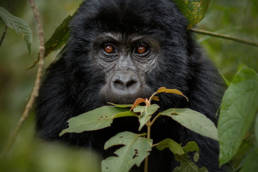Royal Bengal Tiger
~ 2.500 worldwide
Royal Bengal Tiger
Introduction
The tiger is one of the world’s largest carnivores and can weigh over 300 kg and reach up to 3.3 metres. Once ranging widely across Asia, from the eastern coast of Russia to the Caspian Sea in the west, the majestic tiger is now an endangered species. It has disappeared from central and south west Asia, from Java and Bali in Indonesia and from large areas of south east and eastern Asia. It is estimated that there has been as much as a 50 per cent decline in the world’s tiger population over the last three decades, with less than 4000 individuals currently in the wild.
Where they can be found
Tigers are currently found in Bangladesh, Bhutan, China, India, Indonesia, Malaysia, Myanmar, Nepal, Russia and Thailand. There are five extent sub-species of tigers in the wild today. The South China tiger (Panthera tigris amoyensis) occurs only in captivity. The Royal Bengal tiger (Panthera tigris tigris) is the most numerous of all the sub-species and inhabits Bangladesh, Bhutan, India, and Nepal. Of the approximately 2,500 Royal Bengal tigers in the world, around 103 individuals live in Bhutan today. The Royal Bengal tigers mainly inhabit the tropical forests of the Indian sub-continent, but in Bhutan, they have been recorded as high as 4,500 meters above sea level.
© BTC
Why they are important
As a top predator, tigers play an important role in maintaining a diverse and healthy forest ecosystem within their habitat landscapes. As the apex of their food chain, tigers keep wild ungulate populations under control which upholds the balance of vegetation growth and herbivores. In many countries, including Bhutan, tigers also hold a strong cultural significance. Furthermore, tiger reserves act as a storehouse for carbon as large tract of forests are protected for tigers.
How they are threatened
Habitat loss, prey depletion, poaching and human-wildlife conflicts are the major causes of population decline of tigers in the wild. As they need large areas to support viable populations, the rapid development and growing population of Asia poses a huge threat to their survival. Pressure from commercial logging, and the expansion of agriculture and human settlements into forest landscapes contribute to the loss of tiger habitats and human-wildlife conflict. Infrastructure development including fences, roads and dams can further pose barriers to their movement and restrict their ability to find suitable habitat and food.
Another emerging threat is climate change, which may result in changes to the physical environment, including geographical and altitudinal range shifts in habitat extent, and impact the seasonality and rates of climate-related hazards including heatwaves, wildfires, droughts, cyclones and floods which may adversely affect tigers and their habitats. For example, seasonal water scarcity in some areas of Bhutan is forcing tigers to move closer to human settlements, increasing the danger of human-wildlife conflicts. Human responses to climate change may also contribute to such conflicts, therefore, the Vanishing Treasures programme is working together with local communities to find solutions to these problems. For instance, the provision of low-voltage electric fencing for agricultural land can protect cattle and reduce tension between humans and tigers.
The reduction of grassland and its impact on tigers
Impacts on the Royal Bengal tiger
 direct
direct indirect
For more information and in-depth graphics click here: Royal Bengal Tiger – Species Brief
There are several direct and indirect threats facing tigers in Bhutan, one of which is the reduction of grassland. This is an example of an indirect threat, partly caused by farmers changing agricultural practices and a phenological shift caused by climatic changes. Earlier farming practices had an element of pastoralism and integral swidden systems that contributed to open grasslands through intermediate disturbance. Many grasslands are now turning into shrub and forest landscapes, reducing food availability for ungulates. While tigers are generalists and can live in a variety of landscape types, they are highly dependent on the availability of these ungulates as prey, meaning that this interlinkage of societal and climatic changes are indirectly impacting the tigers´ livelihood.

